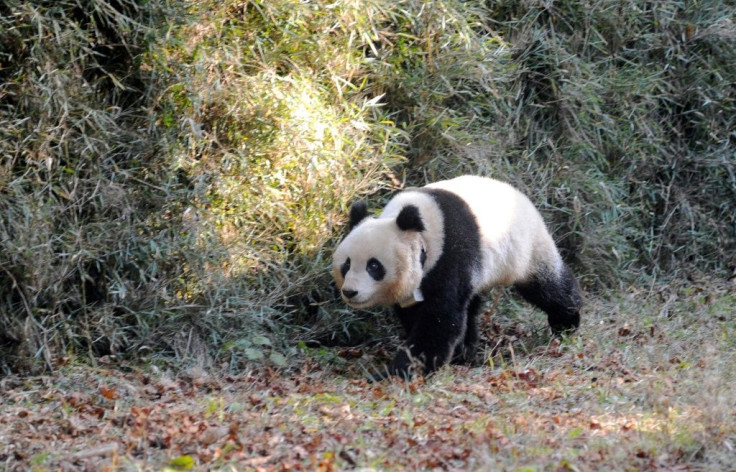Pandas Cover Themselves In Horse Poop And Scientists May Finally Know Why
KEY POINTS
- Researchers first saw a panda covering itself in horse poop in 2007
- It's possible that pandas were doing this to feel warm, a new study said
- The animals showed the behavior only in certain months
Why do pandas cover themselves in horse poop? Scientists say they may be trying to keep themselves warm.
In 2007, researchers in China saw something rather strange: a wild giant panda rolling around and rubbing itself with horse manure. Scientists have since been trying to understand the reason for the behavior, Science News reported.
Now a team of researchers may have found a clue behind this strange behavior, dubbed horse manure rolling (HMR). For the new study, published in Proceedings of the National Academy of Sciences, the researchers set up motion-sensitive cameras and captured a total of 38 HMR behaviors in pandas from June 2016 to June 2017.
Interestingly, the temperatures were between -5 to 5 degrees Celsius when most of the observations were captured. No such observations were recorded when temperatures exceeded 20 degrees Celsius. The behavior was observed only in certain months and not the whole year, the researchers said, suggesting that it was only seasonal.
The team also found that pandas had a preference for manure that's fresh, ignoring the ones that were already several days old. An analysis of horse manure showed it contained compounds known as beta-caryophyllene (BCP) and beta-caryophyllene oxide (called BCPO), which were common in plants. But the compounds were pretty scarce in older manure, suggesting that the BCP/BCPO might be attracting the animals to the poop.
When the researchers added BCP/BCPO to the hay given to six pandas at the Beijing Zoo, the animals preferred them, with some even rubbing the treated hay on their bodies.

So what really made the pandas roll in poop? It's possible that they were doing it because of the benefits BCP and BCPO compounds provided in colder temperatures, the researchers said. In the laboratory, the researchers applied diluted BCP/BCPO to the paws of lab mice and tested their tolerance to the cold.
Mice treated with BCP/BCPO showed higher tolerance to colder temperatures and they did not even huddle together when the temperatures were below freezing compared to the mice that were simply given a saline solution.
On a molecular level, the researchers found that BCP/BCPO directly targets a "cold-sensing" protein called transient receptor potential melastatin 8 (TRPM8), thereby inhibiting it.
"Therefore, horse manure containing BCP/BCPO likely bestows the wild giant pandas with cold tolerance at low ambient temperatures," the researchers wrote.
It's possible that the pandas were covering themselves in horse poop because the compounds in it were helping them to keep warm in colder weather.
Although there are other possible explanations for the behavior and further studies are needed to really understand HMR behavior in pandas, the new findings provide clues as to why pandas engage in this seemingly odd behavior.
© Copyright IBTimes 2024. All rights reserved.












